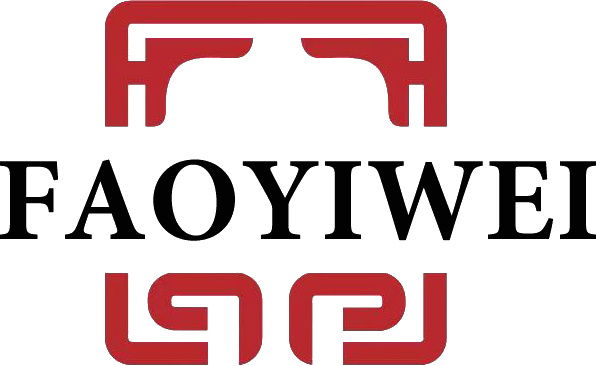
Key Advantages and Applications of Arc Welding Robots
In the modern industry, a model of welding automation is arc welding robots. Such a technology combination of precision, speed, and reliability is massively important in the automotive, aerospace, and heavy equipment sectors. But what is an arc welding robot, and how does it differ from a welding robot? In this article, we will discuss its fundamental aspects, benefits, application, and how its contribution to creating perfect welds is so vital.
What is an Arc Welding Robot?
An arc welding robot is a computer-controlled robot that is programmed to perform arc welding, a technique of welding whereby metal is formed into a weld using an electric arc. Compared to manual welding, robots give consistent repetition, decreased error, and increased productivity.
Principal Components of an Arc Welding Robot
- Robot Arm (Welding Robot Arm): The most obtrusive feature is the most impressive part of the system and represents a series of axes for flexibility and smooth motion.
- Welding Power Source: Supplied to provide current for the creation of an electric arc.
- Wire Feeder: Supplies the filler metal (welding wire) to the weld joint.
- Torch: The gun, which concentrates the arc and supplies shielding gas to protect the weld pool.
- Controller: Robot “brain” that directs and orders its motion.
- Sensors & Vision Systems: Enable seam following and adaptive welding to ensure quality consistency.
Advantages of an Arc Welding Robot
Why is the arc welding robot better than traditional welding? Some of the major advantages are:
- Improved Precision & Repeatability – The robot arm has precise movement all the time, making the same weld every time.
- Improved Productivity – Robots don’t get tired and work twenty-four hours a day, much increased production.
- Improved Safety – Removes human exposure to poisonous vapors, sparks, and heat.
- Cost Savings – Avoiding material waste and rework, lowering operating costs.
- Flexibility – They may be used for additional weld work, and they are best suited for specialty applications.
Major Applications of Arc Welding Robots
Arc welding robots find extensive application across many industries due to their reliability and flexibility. Some of the most common applications include:
1. Automotive Industry
- Body-in-White Assembly: Arc welding robots are used extensively in car body, door, and chassis component production with high accuracy.
- Exhaust Systems: The arc welding robot arm assembles precision tubes for leak-free exhaust pipe systems.
- Battery Trays for Electric Vehicles: As electric vehicles are increasing, battery enclosures are welded repeatedly by robots to maintain consistency.
2. Aerospace & Defense
- Aircraft Structures: Mirror-finish welds on large components like fuselage panels and engine mounts are guaranteed through the use of arc welding robots.
- Missile & Satellite Fabrication: Aerospace materials need very accurate, heavy-duty welding.
3. Heavy Equipment & Construction Equipment
- Excavators & Bulldozers: Robotic welding can provide the same hard welds and thick steel plates demanded by heavy machinery and equipment.
- Mining Equipment: The robotic arm is free from hostile environments that take away from weld strength.
4. Shipbuilding & Offshore Structures
- Hull Construction: Arc welding robots’ reliability and speed assist in bringing very large ship hulls together.
- Oil Rig Components: Offshore platform welds require corrosion-resistant welds.
5. Industrial Piping & Pressure Vessels
- Welding of Pipelines: Robotic welds flawless, spotless welds on oil, gas, and chemical pipelines.
- Boilers & Storage Tanks: Robotic welding removes human error from pressure vessels.
6. Custom Fabrication & Repair Work
- Prototyping & Small-Batch Production: Arc welding robots are highly suited to custom metal fabrication due to their reprogrammability.
- Maintenance & Repair: Robots are used for precision-critical repair in the plant.
The Robot Arm Welding
The robot arm is the heart of an arc welding robot, controlling its distance of movement, speed, and accuracy. Later, robot arms are:
- 6-Axis Articulation – Offers 3D motion for complex weld traces.
- High Payload Capacity – Supports heavy welding attachments and torches.
- Collision Detection – Avoids equipment damage by detecting collisions.
- Compact Design – Takes up small workspaces without sacrificing performance.
Arc Welding Robot vs. Welding Robot
While all arc welding robots are welding robots, all welding robots are not welding arc welds. The main differences are listed below:
| Feature | Arc Welding Robot | General Welding Robot |
| Process | Uses electric arc | May use laser, spot, or other methods |
| Applications | Heavy-duty metal joining | Broader, including plastics |
| Precision | Extremely high | Varies by type |
| Cost | Higher due to complexity | More affordable options available |
Conclusion
The arc welding robot is an advanced computer-controlled welding machine of heretofore unparalleled precision, efficiency, and safety. The mechanical arm is the marquee attraction in generating high-level welds with minimal direct human labor. In motor vehicle and aeronautical manufacturing, boat building, and more, arc welding robots are revolutionizing industrial manufacturing.
While the universal welding robots are ubiquitous, the arc welding robot is a special-purpose metalworking machine. As more and more companies try to adopt automation technology, the robots will be located at the very center of modern production lines, producing the highest quality welded products at the best productivity.
Interested in learning more about adding arc welding robots to your company? Keep reading for another comprehensive welding automation discussion!
